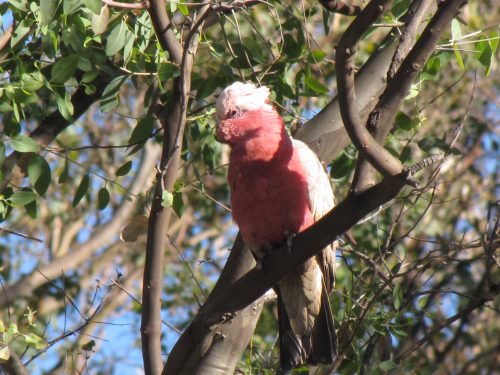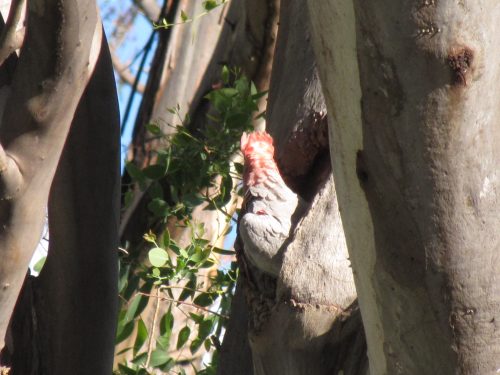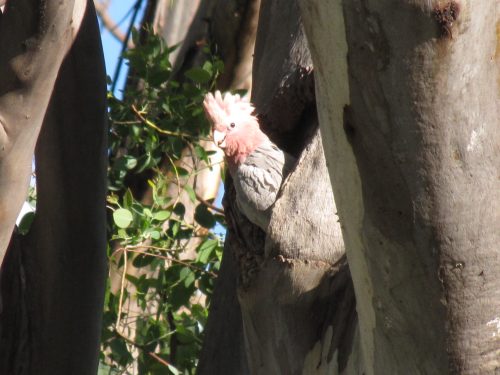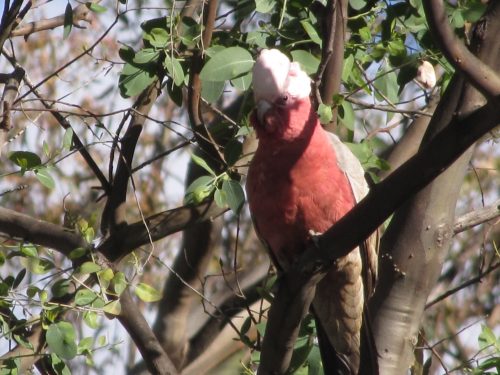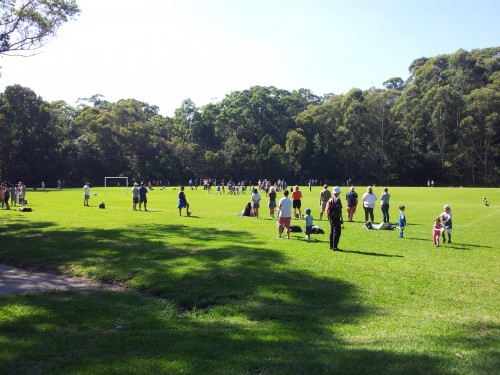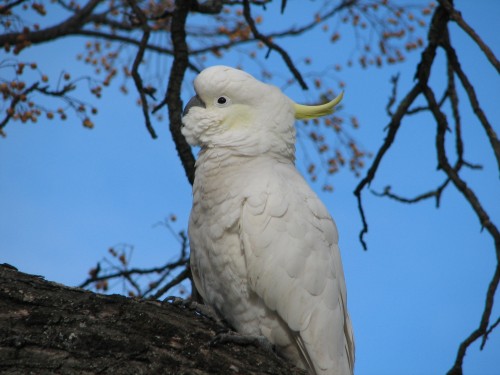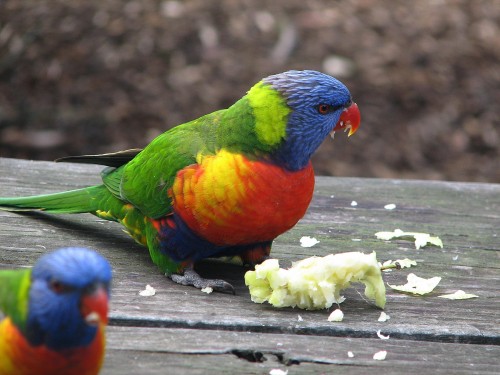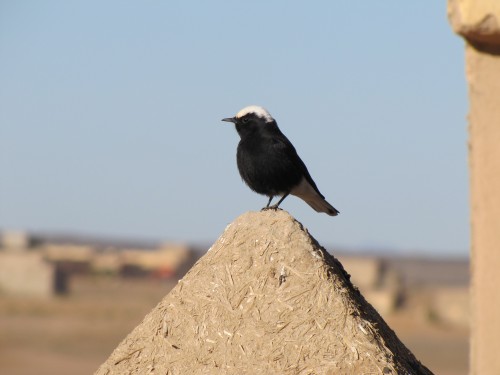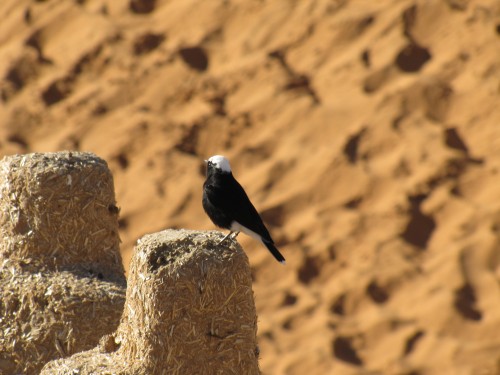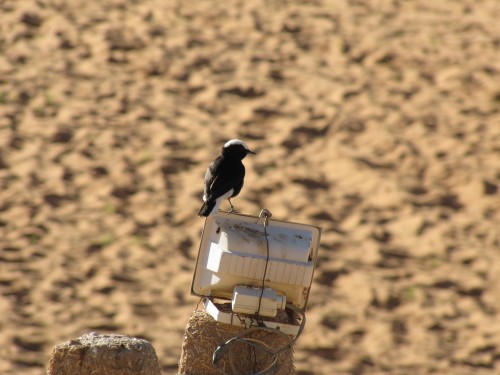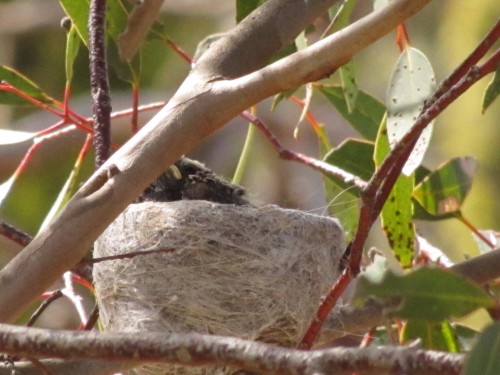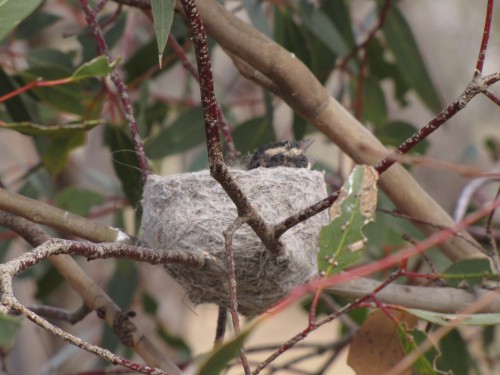What are these Galahs up to?
On our return trip from Sydney last year, we didn’t take the direct route home to Murray Bridge. Instead of taking two days to get home, we took a circuitous route through north-western New South Wales. We drove through Lithgow, Capertee Valley, Mudgee, Dunedoo, Cobar and Broken Hill. We saw some parts of the country we had never visited before, which is always an interesting way to travel.
On our first night away from Sydney, we stopped at one of the caravan parks in the town of Mudgee. We arrived late in the afternoon. After we had unpacked and settled into the cabin, we sat on the front deck of the cabin enjoying the balmy evening and a nice cuppa. As we were sitting there I had my notebook and binoculars at the ready, as well as my camera. My attention was soon drawn to a Galah perched in a nearby tree. This tree was about 30 metres from where we sat.
I noticed that the Galah was not attempting to fly away, but it was interested in what was happening further down the trunk. Another Galah, presumably its female mate, had emerged from a hollow there (see photos below). It looked as if the female was preparing the hollow ready for nesting. This was last Septemeber, right about the time they begin preparing nesting hollows for their next brood. I have no evidence that this pair went ahead and had a brood of young because we moved on elsewhere next morning.
The Galah is one of Australia’s most recognisable parrots. We have many colourful parrots in Australia – you can see photos of some of them by doing a search on this site. I have written frequently about parrots over the years and have included many photos of them. Some of these posts are included in “Further Reading” below.
Further Reading:
Is that terrible noise actually a bird call?
I am writing this while visiting my son and family in Sydney. We do this several times every year and really enjoy the times we spend with our two grandchildren. It always affords me good opportunities to see birds here, on the journey over from South Australia, and during the return trip. On the first Saturday we were here, my son was washing the car in the back yard and I was there chatting with him. I also had an eye on the children performing on the trampoline. We all stopped what we were doing when we heard a bird call. My first thought was, “Is that terrible noise actually a bird call?
I could see the two birds in question in the street tree a few metres away. Although they were high up in the tree, I had a clear view of them. i didn’t have my camera with me – it was in our locked car 30 metres away – nor did I have my binoculars – which were also in the car. It didn’t matter; I instantly identified the birds as Channel-billed Cuckoos. This was the first time I had actually seen this species, so it counted as a lifer.
I was able to watch them for about a minute as they called raucously. Various other species were mobbing them, trying to get them to fly away. These included Noisy Miners, Rainbow Lorikeets, Australian Magpies, Pied Currawongs and several Australian Ravens. These latter three are all hosts to this cuckoo species, so I am not surprised that they were keen to see them off elsewhere.
During our four weeks here in Sydney I have seen this species several more times, and heard them calling around here on many more occasions. I have learned that although they are not a nocturnal species, they will often call during the night during the breeding season. That must be very annoying to anyone trying to sleep. Thankfully, we do not have this species where I live in South Australia.
You can learn more about this parasitic species and see a photo of it on the Birds in Backyards site. There is also a short sound recording of the call.
Good birding,
Trevor
A little birding at soccer
We are currently staying with our son and his family in Artarmon, a suburb of Sydney. We try to get over here from Murray Bridge where we live at least once and preferably twice a year. While we are visiting I take every opportunity to do any incidental birding. There are significant differences in the range of bird species present here in Sydney when compared to at home.
On the last two Saturdays, we have had the opportunity to accompany our grandson to watch him play soccer. The photo above was taken with my phone at yesterday’s match. It was held on some pitches in Chatswood West, near the Lane Cove River. The match was a little uneven with my grandson’s team winning 10-0. He scored a goal, hit both upright posts and did a creditable job as the goalkeeper for the second half.
While I managed to mostly keep my eyes on the game from my folding chair, I was aware of some bird activity nearby. There were plenty of Noisy Miners nearby, their constant calling forming a backdrop to the noise of the game. My concentration on the game was tested on occasion when numerous raucous Sulphur-crested Cockatoos came wheeling overhead, landing in the trees surrounding the pitches.
After the game my wife and I found a comfortable garden seat near the playground adjacent to the soccer fields. This area was surrounded by many trees and bushes. While we sat there we were entertained by two Rainbow Lorikeets working at a hollow in a branch of a nearby tree. Within a few minutes a small flock of about 5 or 6 Sulphur-crested Cockatoos came into the same tree, squawking very noisily. The lorikeets vacated the hollow, their protesting screeches making the cockatoos know that they were far from happy. Several of the cockatoos inspected the hollow before leaving it. The hollow would have been too small for the much larger birds.
Other birds seen in the vicinity include:
- Australian Magpie
- Magpie Lark
- Common Myna
- Laughing Kookaburra
- Welcome Swallow
Now for the sad news.
I forgot to take my camera. The above photo was taken with my phone, but taking bird photos requires a much better camera setup than that. Had I remembered to bring my normal camera from home I would have managed to get some great shots of both the lorikeets and the cockatoos. The cockatoos had their yellow crests up on display for much of the time that we observed them. As well as those two species displaying for us, we also had a Laughing Kookaburra flying down to the lawn just in front of us to gobble up a tasty morsel for lunch.
For a moment, I thought I would be able to use my wife’s camera which was in the car. On opening up here camera bag, we found that the batteries were flat, including the spare set. Sigh. We will just have to return there while we are still here. In the meantime, I have included several photos of cockatoos and lorikeets taken elsewhere.
White-crowned Black Wheatear in the Sahara
On our tour of Morocco a few years ago we stopped for breakfast in the garden of an auberge (hotel) on the fringe of the Sahara Desert. We had spent the night in a Berber tent in the desert. It happened to be Christmas Eve – one we will not forget because it was so different. During breakfast, I was able to add quite a few photos of birds hanging around the gardens and buildings of the hotel.
One of the delightful birds I saw and photographed was the White-crowned Black Wheatear (Oenanthe leucopyga). This was a “lifer” – the first time I had ever seen this species in my life. I was so pleased to get several good photos of the bird. At the time, I didn’t know what it was and I have needed to do plenty of research here at home, both for this species, and for many others seen on the trip.
I have discovered that wheatears were once regarded as members of the Thrush family. In more recent times the experts have agreed that they are, in fact, members of the Old World Flycatcher family of birds.
They breed in the stony deserts from the Sahara across northern parts of Africa and as far as Iraq. It also occurs as a vagrant in parts of Europe, even occasionally in Great Britain. It makes a nest in the crevices of rocks or walls.
This species eats mainly insects. It also has a loud song, but the one I saw wasn’t calling.
You can read more about this species on Wikipedia here.
Baby birds everywhere
Over the past month or so the area around our garden has been full of birds nesting, sitting on eggs, feeding young or busy feeding the fledglings after they leave their nest. Spring time here in South Australia is the main breeding season for many species of birds, especially the bush birds. Many of our trees and shrubs are also flowering which means plenty of food for the birds, both the nectivorous and insectivorous species.
Here is an annotated list of the species I have observed nesting or feeding young this spring, plus a few species I suspect have been nesting nearby. All of these observations have been in our garden or on our 5 acre property in Murray Bridge, South Australia.
- Willie Wagtail – the photos of the nest (above and below) on today’s post are of the nest with two babies just peeping over the top of the beautiful cobweb lined nest. They have since fledged and are flying around begging for food.
- Australian Magpie – I knew that our resident magpies were nesting but it was only when the young started calling to be fed that I found the nest. They had made a nest in a completely new tree this year. Last year’s nest tree was blown over by one of our winter storms. (Must cut it up for firewood.)
- House Sparrow – these seem to be always nesting, not just in the spring.
- Common Starling – about a dozen tree hollows had nests in them and it is quite obvious when there are babies in the nest; their calling for food is incessant. Most of the starlings have now flown off to the fruit growing districts nearby.
- Red Wattlebird – there have been several fledged young wattlebirds getting around in recent weeks. I suspect that the adults may well be nesting again. The male continues to boss all the other smaller species quite unmercifully. They don’t like sharing their food, even though there is plenty to go around.
- New Holland Honeyeater – I saw several parents feeding young just out of the nest quite a few weeks ago. They may well be nesting again, but their nests are usually well hidden in dense bushes.
- Peaceful Dove – we saw a pair mating and they have been hanging around close to the house for many weeks. I have yet to find the nest – in part due to a very bad back at present.
- Crested Pigeon – this species always seems to be breeding, but they chose a bush quite a distance from the house this spring.
- Spotted Turtledove – again, due to my back I haven’t yet found their nest.
- Galahs – this one is tragic. After many attempts at breeding over several years in a tree hollow near the house they finally hatched a brood of young, only to see them die in the nest during an unseasonably hot spell several weeks ago.
- Common Blackbird – this species often makes a nest in our garden shed, but this year they seem to be nesting next door and only visit our garden occasionally.
- Australian Magpie-Lark – again, this species has chosen to nest in the neighbour’s tall trees. They visit our garden frequently to catch food for the young.
- White-winged Chough – another species which visits frequently – except in recent weeks. I often see them down the road about a hundred metres away, so they are probably nesting there.
- Little Ravens – although several of this species visit almost daily, I have yet to record them nesting in one of our trees, preferring to keep away from the magpies’ nest, I presume.
- White-browed Babblers – it has been quite a few years since they last nested in our garden but they are regular visitors – except in recent weeks – they must be nesting somewhere nearby.
- Superb Fairy-wren – our resident pair still seems to be around the house garden, but they are very quiet and secretive about the location of their nest.
- Cuckoos – we have heard the calls of the Horsfield’s Bronze-cuckoo a few times several weeks ago but have seen no evidence that they stayed long enough to nest.
- Other possibilities: White-plumed honeyeater, Singing Honeyeater, Spiny-cheeked Honeyeater, Yellow-rumped Thornbill, Weebill, Striated Pardalote, Spotted Pardalote.
